
Devo is an American new wave band from Akron, Ohio, formed in 1973. Their classic line-up consisted of two sets of brothers, the Mothersbaughs and the Casales, along with Alan Myers. The band had a No. 14 Billboard chart hit in 1980 with the single "Whip It", the song that gave the band mainstream popularity.
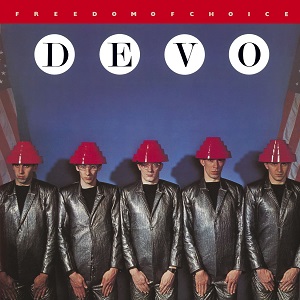
Freedom of Choice is the third studio album by the American new wave band Devo, released in May 1980 on Warner Bros. Records. The album contained their biggest hit, "Whip It", which hit No. 8 and No. 14 on the Billboard Club Play Singles and Pop Singles charts, respectively. Freedom of Choice peaked at No. 22 on the Billboard Pop Albums chart.
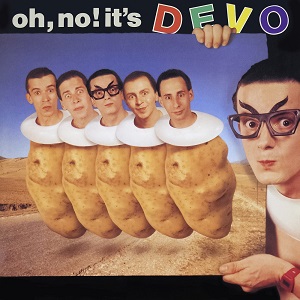
Oh, No! It's Devo is the fifth studio album by American new wave band Devo, released in 1982 by Warner Bros. Records. The album was recorded over a period of four months, between May and September 1982, at Cherokee Studios in Los Angeles and was produced by Roy Thomas Baker.

"Whip It" is a song by American rock band Devo from their third studio album Freedom of Choice (1980). It is a new wave and synth-pop song that features a synthesizer, electric guitar, bass guitar, and drums in its instrumentation. The apparently nonsensical lyrics have a common theme revolving around the ability to deal with one's problems by "whipping it". Co-written by bassist Gerald Casale and lead vocalist Mark Mothersbaugh, Devo recorded "Whip It" with producer Robert Margouleff at the Record Plant in Los Angeles.

New Traditionalists is the fourth studio album by the American new wave band Devo, released in 1981 by Warner Bros. Records. The album was recorded over a period of four months between December 1980 and April 1981 at the Power Station in Manhattan, New York City. It features the minor hits "Through Being Cool" and "Beautiful World".

Gerald Vincent "Jerry" Casale is an American musician. He came to prominence in the late 1970s as co-founder, co-lead vocalist, and bass player of the new wave band Devo, which released a top 20 hit in 1980 with the single "Whip It". Casale is the main lyricist and one of the main composers of Devo's music and directed most of Devo's music videos. He is one of only two members who have been with Devo throughout its entire history. Casale's brother Bob also performed with the band.

Robert Edward Casale Jr., or "Bob 2", was an American musician, composer and record producer. He came to prominence in the late 1970s as the keyboardist and rhythm guitarist of the new wave band Devo, which released a Top 20 hit in 1980 with the single "Whip It". The band has maintained a cult following throughout its existence. He was the younger brother of their co-founder and bass guitarist Gerald Casale.

Q: Are We Not Men? A: We Are Devo! is the debut studio album by the American new wave band Devo. It was originally released in August 1978 on Warner Bros. in the North America and Virgin Records in Europe. Produced by Brian Eno, the album was recorded between October 1977 and February 1978, primarily in Cologne, West Germany.

Duty Now for the Future is the second studio album by American rock band Devo, released in 1979 by Warner Bros. Records. Produced by Ken Scott, the album was recorded between September 1978 and early 1979 at Chateau Recorders in Hollywood. The majority of the songs on the album had been performed in Devo's live set as early as 1976.
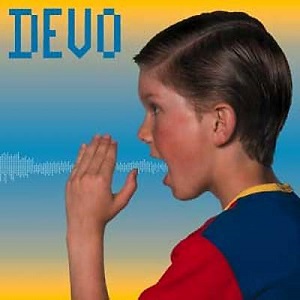
Shout is the sixth studio album by American new wave band Devo, released on October 8, 1984 by Warner Bros. Records.

Total Devo is the seventh studio album by American new wave band Devo, released in 1988 by Enigma Records. "Disco Dancer" hit No. 45 on Billboard's Hot Dance Club Play chart for the week of September 3, 1988.

Robert Leroy Mothersbaugh, Jr., or by his stage name "Bob 1", is an American musician, singer, songwriter and composer.

DEV-O Live is a live EP by American new wave band Devo. It was recorded during the Freedom of Choice tour on August 16, 1980, at the Fox Warfield Theatre in San Francisco.
The Truth About De-Evolution is a 9-minute short film written by Gerald Casale and Mark Mothersbaugh, for the band Devo, and directed by Chuck Statler. Filmed in May 1976, it contains two separate songs: "Secret Agent Man" and "Jocko Homo". It won First Prize at the Ann Arbor Film Festival in 1977, and was routinely screened before Devo live concerts. It is included as an extra on the Criterion Collection's release of Island of Lost Souls (1932). Stills from the film were used for the front and back cover of European releases and the inner sleeve of American releases of Q: Are We Not Men? A: We Are Devo! (1978).

Pioneers Who Got Scalped: The Anthology is a compilation album by the American new wave band Devo, released in 2000 by Rhino Records. 17 of the 50 tracks were previously unreleased on CD, including single B-sides, outtakes, remixes, soundtrack songs and spoken word material. The band recorded the long-time concert favorite "The Words Get Stuck in My Throat" in the studio for the first time, specifically for inclusion on this compilation.

The discography of Devo, an American new wave band formed in 1973, consists of 25 singles and 9 studio albums. Devo was founded by Gerald Casale, Bob Lewis and Mark Mothersbaugh. Devo currently consists of brothers Mark Mothersbaugh and Bob Mothersbaugh, Gerald Casale, Josh Hager and Josh Freese (drums). The band rose to prominence in the US during the new wave era with their single "Whip It". The band have released nine studio albums, ten extended plays, fourteen compilation albums, ten live albums, one soundtrack album and twenty-five singles.
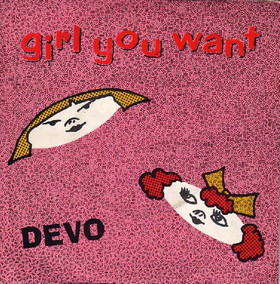
"Girl U Want" is a 1980 single by American new wave band Devo. It was the first single released from their third studio album, Freedom of Choice (1980).
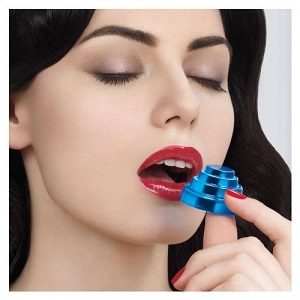
Something for Everybody is the ninth studio album by American new wave band Devo. It was originally released in June 2010 on their original label Warner Bros., and was their first issued on that label since their sixth studio album Shout in 1984. The album was recorded between July 2007 and mid-2009, at Mutato Muzika, in West Hollywood, California. The album is the last Devo album to feature Bob Casale, who died in February 2014.

Mechanical Man is a semi-official EP by new wave musicians Devo, released in 1978. It includes four 4-track basement demos by the band, recorded before they were signed to a record contract with Warner Bros. Records.

Hardcore Devo Live! is a concert film and live album, showcasing Devo's June 28, 2014, performance at the Fox Theatre in Oakland, California on the 2014 Hardcore Devo Live tour. The tour commemorates the 40th anniversary of the band and pays tribute to former band member Bob Casale, who died February 17, 2014. The set list exclusively focuses on songs written between 1974 and 1977, before Devo had a recording contract. Many of the songs had not been performed by the band since 1977. While the music is largely performed as a quartet, the band is augmented offstage by Brian Applegate on additional keyboards and bass guitar.























